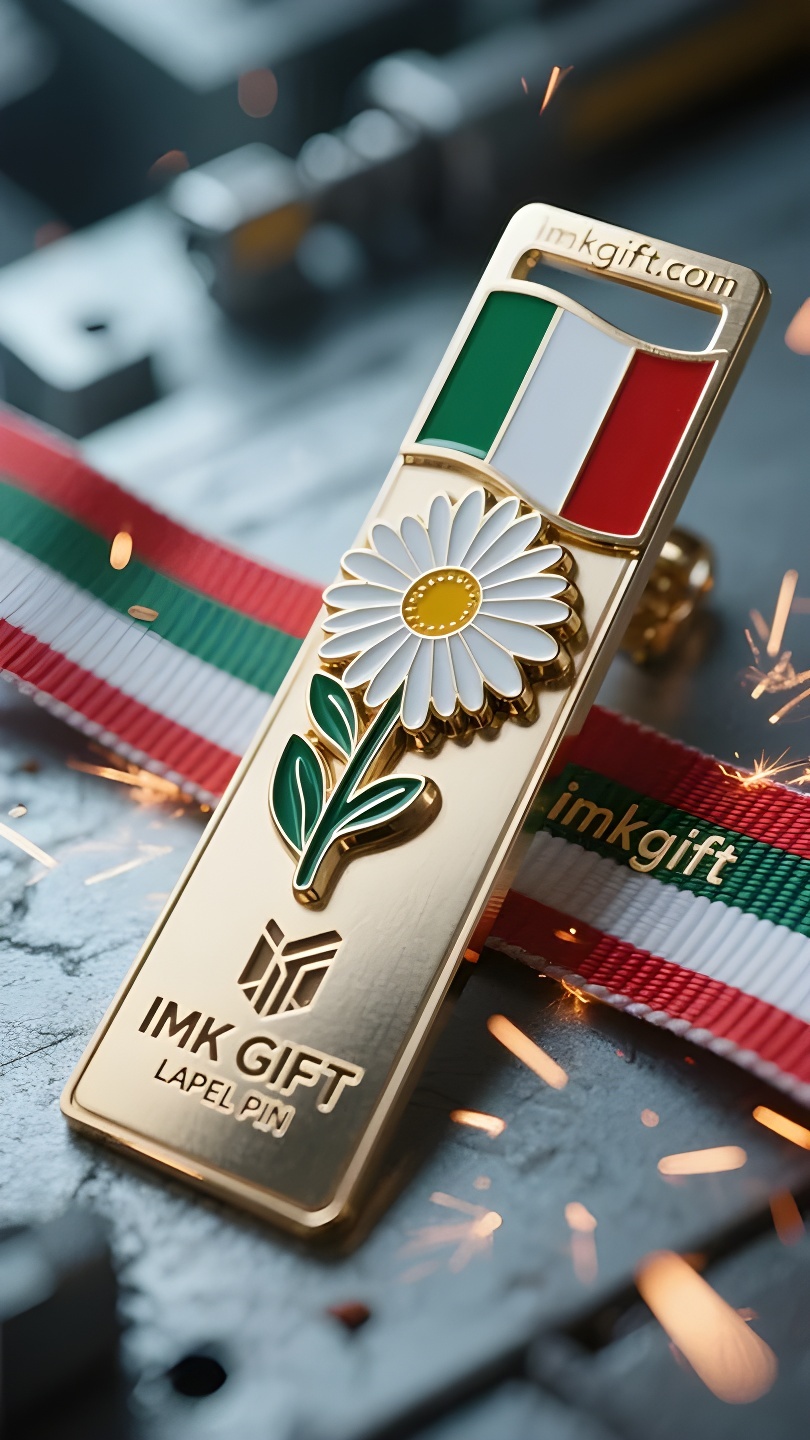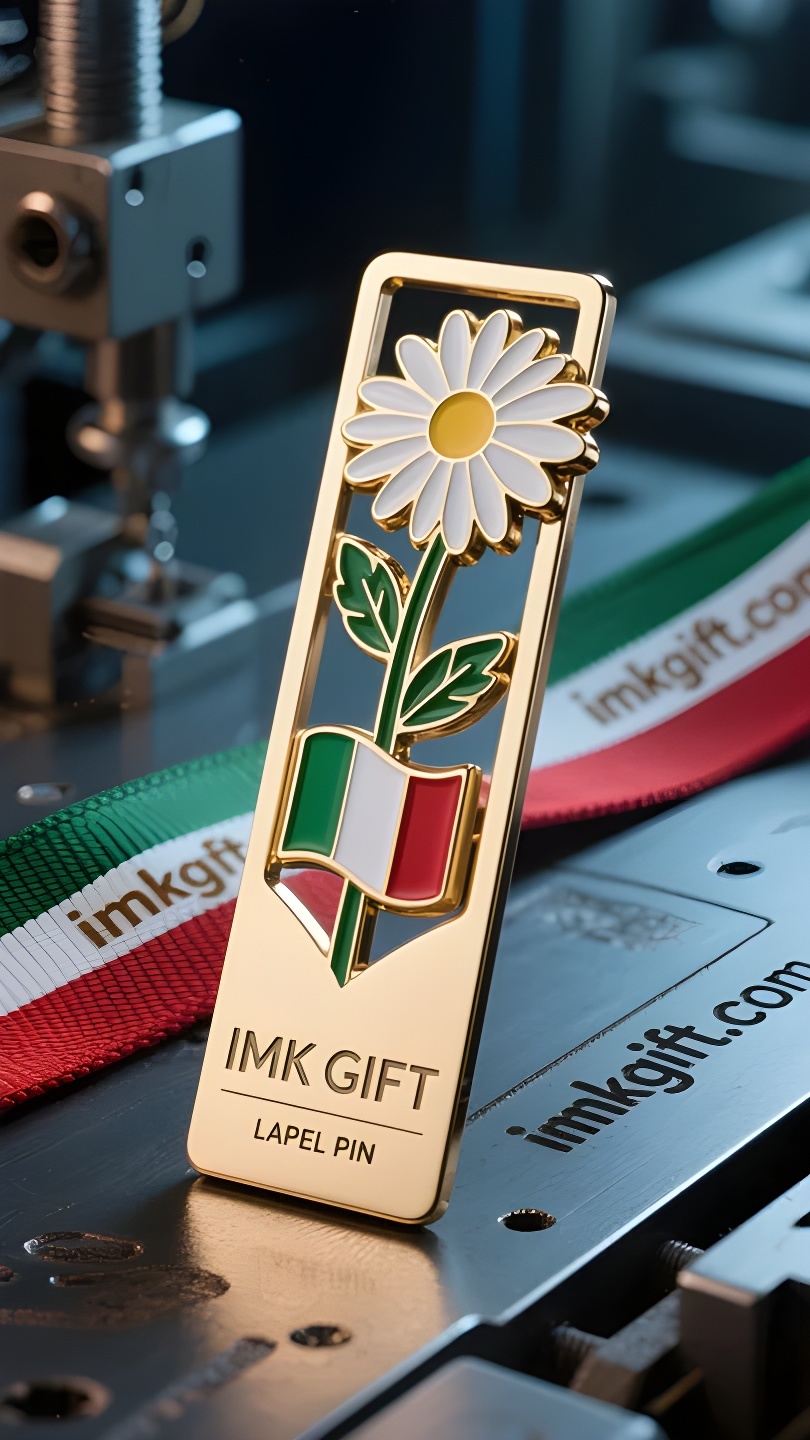in995-Il-segnalibro-eterno-che-sboccia-tra-il-verde-il-bianco-e-il-rosso
▼
Il 4 novembre, Giornata dell’Unità Nazionale e delle Forze Armate, la bandiera tricolore sventola nella brezza autunnale. Il verde, il bianco e il rosso non solo simboleggiano la patria e la fede, ma sono anche come i fili colorati sfumati di un segnalibro a forma di margherita: il verde simboleggia gli steli e le foglie resistenti, il bianco i petali puri e il rosso è il segno indelebile della fede. Nella penisola appenninica le margherite vengono chiamate “Margarita”. Secondo la leggenda, le ragazze raccoglievano margherite e le trasformavano in segnalibri, che mettevano nelle lettere che i soldati spedivano a casa per trasmettere speranza. Questo fiore selvatico riesce a crescere nelle fessure delle rocce, proprio come gli italiani hanno sempre mantenuto la loro vigorosa vitalità tra gli alti e bassi della storia. Oggi il segnalibro a forma di margherita è diventato un simbolo di tutela del patrimonio culturale. I fiori eterni che sbocciano sul legno sottile ricordano alle persone che la vera resilienza non sta nel non cadere mai, ma nel saper rifiorire ogni volta che si cade. Gli artigiani per le strade di Torino continuano a intagliare segnalibri a forma di margherite e ogni modello perpetua l’ingegno dei loro predecessori. Quando la bandiera tricolore e il segnalibro brillano insieme alla luce del sole, ciò che vediamo non è solo l’eredità della memoria nazionale, ma anche la luce eterna nel cuore di ogni comune individuo. Proprio come le margherite possono fiorire anche senza un terreno fertile, finché conserviamo le radici della fede, possiamo far crescere la nostra primavera in ogni epoca.
On November 4, Italy’s National Unity and Armed Forces Day, the tricolor flag unfurled in the autumn wind. Green, white and red not only symbolize the country and faith, but also are like the gradient colored silk on the daisy bookmark – green is the tough stems and leaves, white is the pure petals, and red is the never-fading mark of faith. Daisies are called “Margherita” in the Apennine Peninsula. According to legend, girls made bookmarks from picked daisies and put them in soldiers’ letters to convey hope. This wild flower can grow in the cracks of rocks, just as Italians have always maintained their vigorous vitality in the ups and downs of history. Today, daisy bookmarks have become a symbol of cultural heritage protection. The eternal flowers blooming on the thin wood remind people that true tenacity does not lie in never falling, but in being able to bloom again every time you fall. Craftsmen on the streets of Turin are still carving daisy bookmarks, and each pattern continues the ingenuity of their ancestors. When the tricolor flag and the bookmark complement each other in the sun, what we see is not only the inheritance of national memory, but also the eternal light in the heart of every ordinary individual. Just as daisies can bloom without fertile soil, as long as we retain the roots of faith, we can grow our own spring in any era.
意大利11月4日的国家统一与武装力量日,三色旗在秋风中舒展。绿、白、红不仅象征着国土与信念,更如同雏菊书签上渐变的彩丝——绿色是坚韧的茎叶,白色是纯粹的花瓣,红色是永不褪色的信念印记。
雏菊在亚平宁半岛被称为”玛格丽塔”,传说中少女将采摘的雏菊制成书签,夹在战士的家书中传递希望。这种野花能在石缝中生长,正如意大利人在历史沉浮中始终保持着蓬勃的生命力。如今雏菊书签成为文化遗产保护的象征,薄木片上绽放的永恒花朵,提醒人们:真正的坚韧不在于永不坠落,而在于每次跌落都能重新绽放。
都灵街头的手工匠人仍在雕刻雏菊书签,每道纹路都延续着先辈的匠心。当三色旗与书签在阳光下交相辉映,我们看到的不仅是国家记忆的传承,更是每个平凡个体内心不灭的光芒。就像雏菊无需沃土也能灿烂,只要保有信念的根系,任何时代都能生长出属于自己的春天。
▼
Contact Us
📞 Tel: +0086-760-85286839
📧 Email: sales3@imkgift.com








